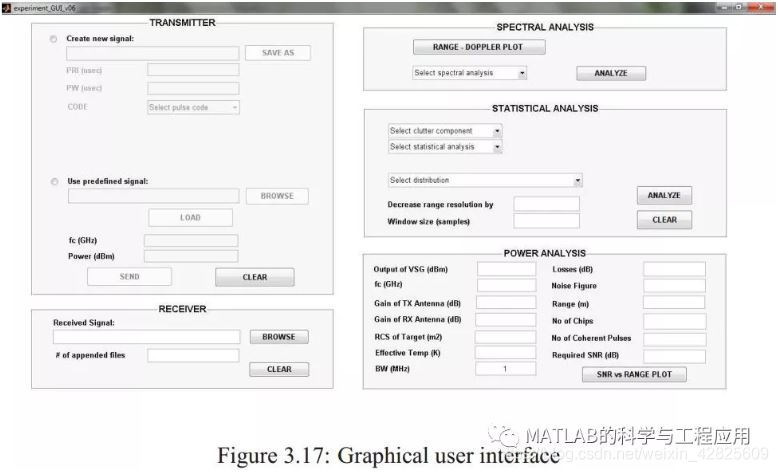
本文为土耳其中东技术大学(作者:NAZLI DEN˙ IZ KAHYAOGLU)的硕士论文,共157页。
雷达探测和成像系统的性能很大程度上取决于雷达杂波的特性。为了改善雷达信号处理算法,需要对雷达杂波进行成功的分析和建模。对于一个成功的雷达杂波模型,应当能够揭示出杂波的频谱和统计特性。在本文的研究中,建立了一个实验雷达数据采集系统来分析雷达杂波。首先利用通用信号对硬件和数据处理系统进行验证,然后在露天环境进行测量。本文详细阐述了系统设计与搭建过程中遇到的局限性和相关问题。对测量得到的杂波数据进行了时间和空间特性的研究探索。对已有文献中提出的假设模型进行了实验数据检验,并通过各种拟合优度检验证实了模型与实验数据的拟合特性。最后,结合雷达系统参数及受照射地形的特征对数据分析结果进行了解释。
The performance of radar detection and imaging systems strongly dependson the characteristics of radar clutter. In order to improve the radar signalprocessing algorithms, successful analysis and modeling of radar clutter arerequired. For a successful model of radar clutter, both the spectral andstatistical characteristics of the clutter should be revealed. Within the scopeof this study, an experimental radar data acquisition system is established toanalyze radar clutter. The hardware and the data processing system are firstverified using generic signals and then a set of measurements is taken in theopen terrain. In this thesis, the limitations and problems encountered duringthe establishment of the system are explained in detail. The spectral andstatistical analyses performed on the recorded data are examined. The temporal andspatial behavior of the measured clutter data are explored. The hypotheticalmodels proposed so far in the literature are tested on the experimental dataand the fitting of models to the experimental data is confirmed using variousgoodness-of-fit tests. Finally, the results of the analyses are interpreted inthe light of the radar system parameters and the characteristics of theilluminated terrain.
1 引言
2 雷达杂波分析
2.1 数据矩阵构建
2.2 杂波谱分析
2.3 杂波统计分析
2.4 杂波反射特性
3 实验数据采集与数据处理
3.1 数据采集系统的一般框图
3.2 发射机
3.3 接收机
3.4 天线
3.5 IQ数据处理
3.6 使用通用信号验证系统
3.7 用户图形界面
3.8 与已有系统的比较
4 分析测量的雷达杂波
4.1 地形1
4.2 地形2
5 结论
附录A 纽曼皮尔逊准则
附录B 假设检验
附录C 关于测量设备的一些注意事项
附录D 受照射地形的高度剖面
下载英文原文地址:
http://page5.dfpan.com/fs/6lcdj2821b291160cc7/
更多精彩文章请关注微信号: